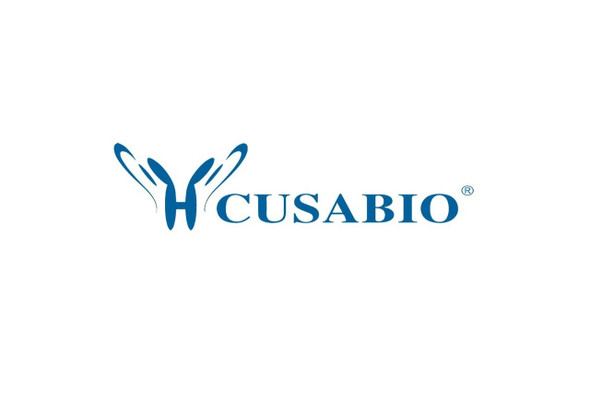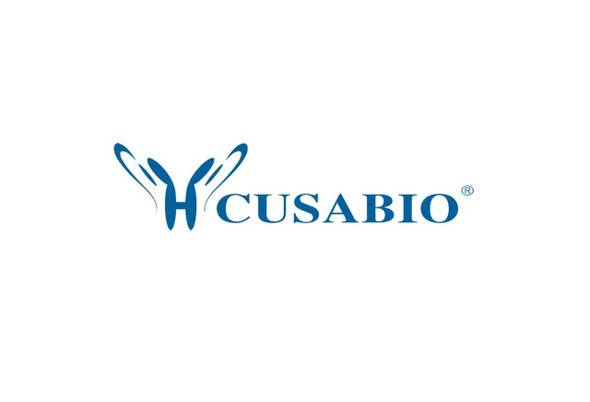Cusabio Mouse Recombinants
Recombinant Mouse Thioredoxin-interacting protein (Txnip) | CSB-EP803849MO
- SKU:
- CSB-EP803849MO
- Availability:
- 13 - 23 Working Days
Description
Recombinant Mouse Thioredoxin-interacting protein (Txnip) | CSB-EP803849MO | Cusabio
Alternative Name(s): Vitamin D3 up-regulated protein 1
Gene Names: Txnip
Research Areas: Others
Organism: Mus musculus (Mouse)
AA Sequence: MVMFKKIKSFEVVFNDPEKVYGSGEKVAGRVIVEVCEVTRVKAVRILACGVAKVLWMQGSQQCKQTLDYLRYEDTLLLEEQPTAGENEMVIMRPGNKYEYKFGFELPQGPLGTSFKGKYGCVDYWVKAFLDRPSQPTQEAKKNFEVMDLVDVNTPDLMAPVSAKKEKKVSCMFIPDGRVSVSARIDRKGFCEGDDISIHADFENTCSRIVVPKAAIVARHTYLANGQTKVFTQKLSSVRGNHIISGTCASWRGKSLRVQKIRPSILGCNILKVEYSLLIYVSVPGSKKVILDLPLVIGSRSGLSSRTSSMASRTSSEMSWIDLNIPDTPEAPPCYMDIIPEDHRLESPTTPLLDDVDDSQDSPIFMYAPEFQFMPPPTYTEVDPCVLNNNNNNNNVQ
Source: E.coli
Tag Info: N-terminal 6xHis-B2M-tagged
Expression Region: 1-397aa
Sequence Info: Full Length
MW: 58.4 kDa
Purity: Greater than 90% as determined by SDS-PAGE.
Relevance: May act as an oxidative stress mediator by inhibiting thioredoxin activity or by limiting its bioavailability. Interacts with COPS5 and restores COPS5-induced suppression of CDKN1B stability, blocking the COPS5-mediated translocation of CDKN1B from the nucleus to the cytoplasm. Inhibits the proteasomal degradation of DDIT4, and thereby contributes to the inhibition of the mammalian target of rapamycin complex 1 (mTORC1). Functions as a transcriptional repressor, possibly by acting as a bridge molecule between transcription factors and corepressor complexes, and over-expression will induce G0/G1 cell cycle arrest. Required for the maturation of natural killer cells. Acts as a suppressor of tumor cell growth.
Reference: "Vitamin D3 up-regulated protein 1 mediates oxidative stress via suppressing the thioredoxin function." Junn E., Han S.H., Im J.Y., Yang Y., Cho E.W., Um H.D., Kim D.K., Lee K.W., Han P.L., Rhee S.G., Choi I. J. Immunol. 164:6287-6295(2000)
Storage: The shelf life is related to many factors, storage state, buffer ingredients, storage temperature and the stability of the protein itself. Generally, the shelf life of liquid form is 6 months at -20?/-80?. The shelf life of lyophilized form is 12 months at -20?/-80?.
Notes: Repeated freezing and thawing is not recommended. Store working aliquots at 4? for up to one week.
Function: May act as an oxidative stress mediator by inhibiting thioredoxin activity or by limiting its bioavailability. Interacts with COPS5 and restores COPS5-induced suppression of CDKN1B stability, blocking the COPS5-mediated translocation of CDKN1B from the nucleus to the cytoplasm. Inhibits the proteasomal degradation of DDIT4, and thereby contributes to the inhibition of the mammalian target of rapamycin complex 1 (mTORC1) (By similarity). Functions as a transcriptional repressor, possibly by acting as a bridge molecule between transcription factors and corepressor complexes, and over-expression will induce G0/G1 cell cycle arrest. Required for the maturation of natural killer cells. Acts as a suppressor of tumor cell growth.
Involvement in disease:
Subcellular Location: Cytoplasm
Protein Families: Arrestin family
Tissue Specificity: Ubiquitously expressed.
Paythway:
Form: Liquid or Lyophilized powder
Buffer: If the delivery form is liquid, the default storage buffer is Tris/PBS-based buffer, 5%-50% glycerol. If the delivery form is lyophilized powder, the buffer before lyophilization is Tris/PBS-based buffer, 6% Trehalose, pH 8.0.
Reconstitution: We recommend that this vial be briefly centrifuged prior to opening to bring the contents to the bottom. Please reconstitute protein in deionized sterile water to a concentration of 0.1-1.0 mg/mL.We recommend to add 5-50% of glycerol (final concentration) and aliquot for long-term storage at -20?/-80?. Our default final concentration of glycerol is 50%. Customers could use it as reference.
Uniprot ID: Q8BG60
HGNC Database Link: N/A
UniGene Database Link: UniGene
KEGG Database Link: KEGG
STRING Database Link: STRING
OMIM Database Link: N/A










